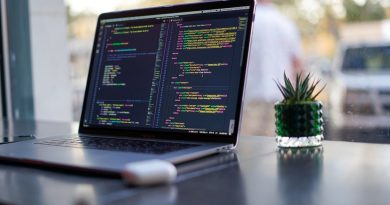A Beginners Guide – For Learning Python for GIS
One can quickly increase their market value by learning Python for GIS. We wanted it to be as simple as saying, especially when you don’t know where and how to start. In this article, we will discuss how to start GIS with Python programming and what its importance is.
In our opinion, GIS programming begins with python, but there will undoubtedly be no end. From a beginner’s point of view, it is now not recommended to start learning as many languages, but easy to differentiate and, again, depends on your needs. A python is an excellent software to get started and to learn GIS programming because this software can be used as both in a scripting and programming language. In ArcGIS, Python scripting is used to automate the tasks and also for writing the applications like add-ins, etc. (by executing python script). At this moment, we will only focus on Python scripting because Python programming is a complex subject and will take time to learn.
#1. First thing first — studying the fundamentals
So, to begin with, we’d suggest learning the basics rudiments of Python for GIS component – so that you’ll find a good pace later. We have to learn about loops, data types, controls functionalities, Python syntax, etc. to use python for GIS. Python has a lot of built-in features, so this can be somewhat overwhelming in case you’re new to programming. With some essential information, you can find a good pace quite quickly and use it inside ArcGIS. It is not necessary to know the whole language to utilize it inside GIS. Besides, we suggest learning how to ask help files inside listing and the interpreter available procedures, modules, and performance, instead of consulting with the data that are outside. With its help, you can gain more control over the language.
For Python newcomers, there are lots of free online content for Python beginners like free tutorials, and almost all of them having the same fundamentals as strings, functions, data types, syntax, etc. One can skip the concept of object-oriented programming because this is the most vital topics that can be used everywhere when working with python.
Now, you may require a local version of python introduced on your PC (www.python.org), or you can go with an online IDE, for example, Python Fiddle that allows you to compose and run python through an internet browser. At the time of choosing an option for learning, you will notice that there is a variety of Python versions for GIS users. Since Python 3 is the wave of the future, so GIS users are recommended to get knowledge of Python 3. However, that doesn’t signify that Python 2 doesn’t have worth, rather the contrary: ArcGIS Desktop, such as utilizes Python 2 and also is likely to keep doing this. To get a thought of the contrasts between the two forms, do a Google look.
#2. Mastering the principles through practice
We are still learning fundamentals of python — and learning basics of python or any other programming language takes a lot of training and practice. Now you are clear about the basics of the python scripting then it’s time to do little research about Python scripting like how it works, utilizing Python interpreter and learning about the differences of running scripts and writing scripts in python.
For GIS analysts, it is very crucial knowledge, and this may necessitate some online surfing since this topic is not covered in several contents online. You also need to practice writing scripts as well as running the scripts which you have developed or written and it doesn’t matter how simple they are because only after practicing you will be able to move further. Additionally, figure out how to remark your code – irrespective of how necessary the code is, you’ll be grateful later you did this when you originally composed it.
For writing and running Python scripts, we strongly recommend working with an IDE (Integrated Development Environment). The thing which is empowering you to compose, run, troubleshoot, or save code is merely a piece of software that functions like a code-editor. One can download and install IDE for free on his/her PC and write, run and debug their scripts — like in the software PythonWin. It becomes simpler to notice errors before and after running a script because to write with code IDE’s is preferred by experts as they assist us by using coloring code regarding distinct elements.
We should have a look at a portion of some inherent usefulness built-in functions of python like the math module, which is a part of the standard library of the python that comes along with the software. The mathematics knowledge from college might seems refreshing because working with numbers again is an essential part of GIS and Python. Whatever is available in this library may be useful later mentioned because the python enables us to work with the objects which are available in the form of geometries. The Python documentation is available on the web and locally, as the installation is included in the setup or in the document which can be counseled to perceive whatever is available. Different aptitudes will make it handy later to figure out how data is written in another document with python, setting the source effectively, how to write SQL proclamations accurately, use of “try and except” blocks to find out about blunder.
#3. Utilizing Python in ArcGIS
A great way to start learning the ArcPy site package is for ArcGIS users to start using the Python window with both ArcMap and ArcGIS Pro so that you will probably be able to use it in ArcGIS with some Python practices under your belt. It is an assortment of modules that enable access to all geoprocessing capacities, and the sky is the limit from there. The thing to notice here is that ArcGIS Ace uses Python 3 but ArcMap utilizes the lower version Python 2. In addition to the autocompletion of code and saving plenty of time, the Python window is having interactive support in the window which helps us to write code with specifying the parameters for an instrument. It is an extraordinary path for learning ArcPy and ought to be your first beginning. When you’re sure utilizing ArcPy, take a stab at keeping in touch with some independent contents using nearby GIS information, run them, and see what occurs.
It is commonly expected that filenames and paths spelt wrong, which may cause mistakes, it might contain errors, for example, incorrectly spelt filenames, ways, directions, and devices even though a Python content has been checked accurately by the IDE for botches that’s why here the presence of mind is the closest companion. Wrong utilization of capitals is a typical blunder and python exceptionally delicate to this. To see how things are progressing or working we can print out messages and control the process of our script like “print(“new geodatabase created correctly”). On the off chance that content ends without mistakes, open ArcMap, and envision the outcomes your content made. On the off chance that the yield isn’t right to form, there might be a significant issue with your code.
There are numerous online instructional exercises and books which are easily accessible to get clarify in detail how everything functions and to get familiar with ArcPy and Python scripting. Once more, start with the nuts and bolts and afterwards proceed onward to progressively complex themes. Yet, you may present with broadly clarified model contents and exercise books with model information to explore different avenues regarding, made by specialists but the ArcGIS Help section is an essential and basic funda for learning ArcPy.
Albeit a speciality showcase, there are numerous useful books accessible about GIS and Python scripting. It is important to be sure to understand the necessary Python skills and to know about ArcPy well before starting, what’s fantastic is there are lots of books which are written for intermediate and advanced learners. A decent prologue to the ArcPy site bundle is Paul Zandbergen’s book “Python Scripting for ArcGIS” – even though it’s more a reference book than a hands-on book. Make sure to consolidate it with a hands-on book, for example, “A Python Introduction for ArcGIS,” the first book on Python scripting for ArcGIS, composed by Nathan Jennings. It centres around python scripting and has a great deal of well-explained contents and bit by bit instructional exercises that I delighted in a ton: even though it’s somewhat dated, every one of the materials run fine and dandy with later forms of ArcGIS. David Allen’s “GIS Instructional exercise for Python scripting” offers the most far-reaching diagram of what’s conceivable with Python in ArcGIS. Ask for an answer book from Esri Press to enable you to get the more value with the help of this book as editing of this book has been problematic at times and there are many errors in the example code though this is replaced by an instructor on the disk and the code works fine.
#4. Python Scripting and Beyond
You might be interested in knowing where to go next with the help of some Python experiences. Before diving into different dialects as well as systems, search for procedures to improve your ebb and flow Python code, for instance, by refactoring it by utilizing list cognizances where conceivable. Compare the work from experts and with one another to make good coding habits from others to improve your work and search for some new geospatial modules that make your coding work simpler.
The learning way depicted above is tedious just as iterative – you’ll end up going to and fro between various stages and gain some new useful knowledge consistently. Yet, it is additionally fun and loaded with shocks. More you master the principles through practice, the simpler it becomes. Interestingly, python broadens GIS – consider numerous other geospatial libraries or utilizing the language “R” with python.
There are numerous alternatives for proceeding with your GIS programming venture after learning Python scripting and programming with ArcGIS. A couple of other options are recorded here. Take, for instance, the ArcGIS Python Programming interface that has been discharged for this present year by Esri. This Programming interface empowers the utilization of python and maps over the web, broadening its usage outside of work area GIS. In this situation, the JavaScript allows associating with maps through a browser and this ArcGIS JavaScript API is another case of a programming language. Start with HTML CSS, and afterwards move along to JavaScript it is a logical step after learning python as you know web innovation is everywhere in the world. You’ll discover that JavaScript additionally offers numerous libraries and frameworks after getting comfortable with the fundamentals, that allow for mapping that worth learning.
Also read: 5 Best Language Learning Apps



